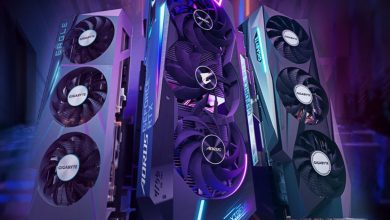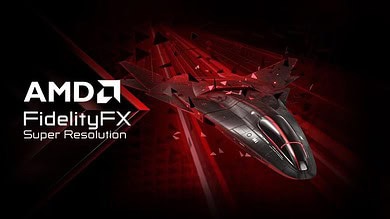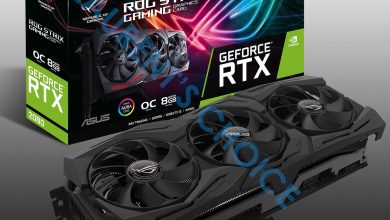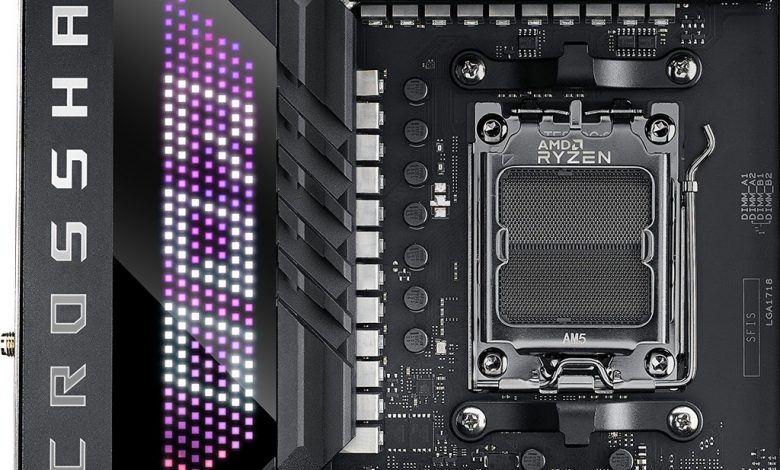
The most noticeable update X670(E) powered motherboards bring from its X570 predecessors, is the introduction of the PCIe 5.0 standard and the support of the new DDR5 RAM modules, both innovations first introduced on Intel Z690 powered motherboard, released during Q4 2021.
In short AMD is playing catch-up with Intel on that front, and this partially explained why ASUS new X670(e) powered motherboards look so similar from their Intel Z670 counterparts.
This said, find below the new X670(E) ASUS boards. Note that I will add new boards to this page as I gather more information.
ROG CROSSHAIR X670E EXTREME
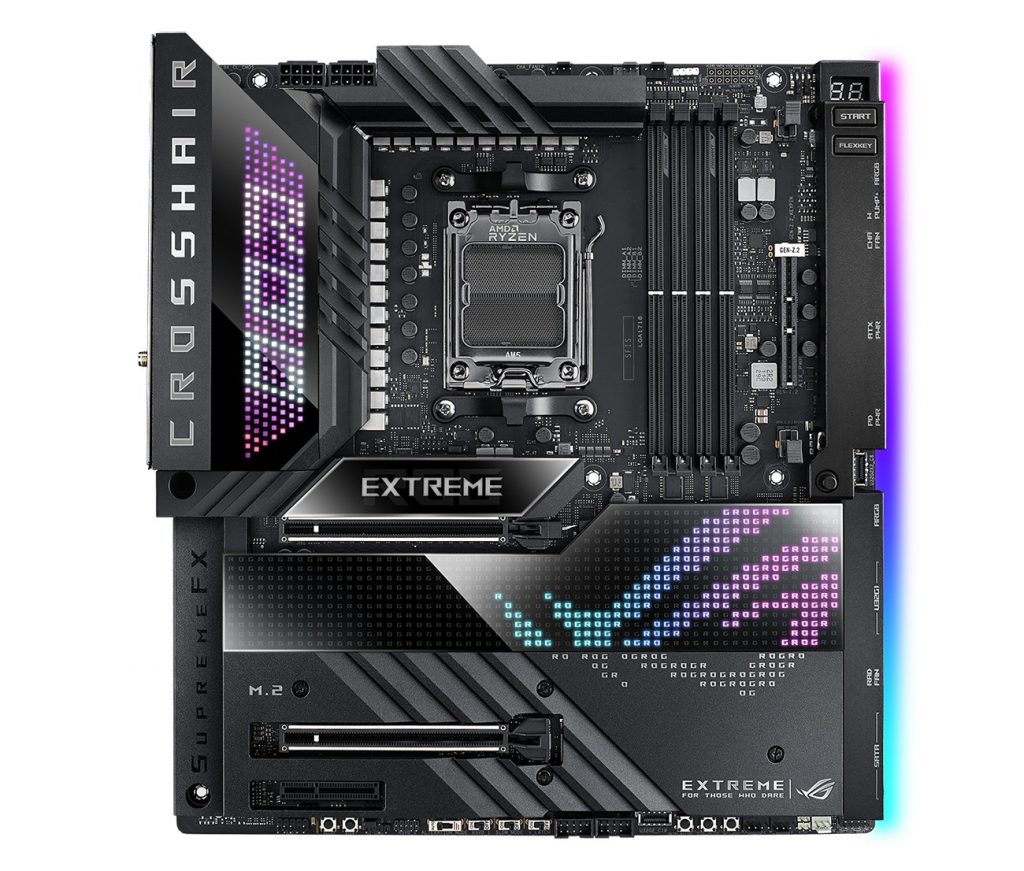
The ROG CROSSHAIR X670E EXTREME is a superlative. There is simply nothing that powerful in the entire ASUS catalogue.
We got 20 + 2 teamed power stages rated for 110 Amps, MicroFine alloy chokes, premium metallic capacitors, and ProCool II power connectors.
That’s 2,420 AMPS in total, 2,200 of which are CPU centric. Needless to say that this will allow some severe (and stable) CPU overclocking. It also hints at a very cool VRM since most of the loads will be spread on 20 power stages.
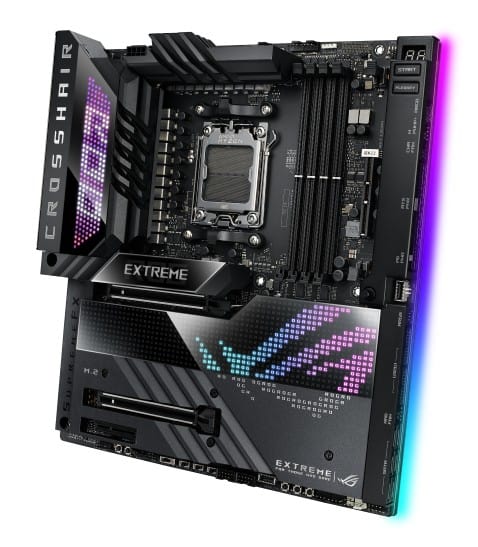
It is an E-ATX motherboard, solidly anchored into a premium build which better be once you know the price tag will orbit 1,500 USD before taxes.
A special focus on troubleshooting solutions, going from the basic EZ debugger, extending to testing solder points, passing by our Q-LED screen for a more refined troubleshooting experience.
We have a solid RGB presence. In the PCB layering, as well as behind the IO roofing and the Chipset heat-shield.
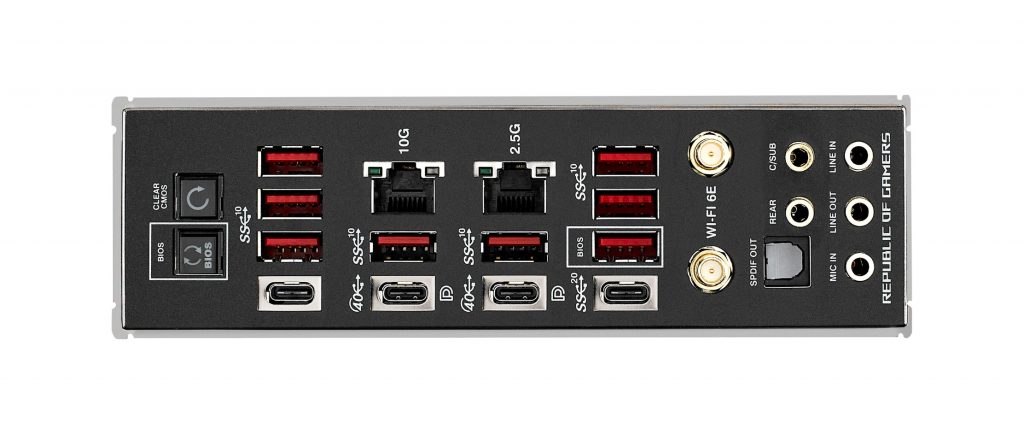
ASUS tried to get as much bandwidth out of the motherboard as possible through the back IO.
- x8 10 Gbps 3.2 USB plugs
- x2 20 Gbps USB Type-C
- x2 40 Gbps USB Type-C (Thunderbolt 4.0)
- a dual band WiFi 6E adapter with upto 2.4 Gbps of data swap, able to transmit on the much fast 6 GHz radio spectrum
- x1 10 Gbps LAN network
- x1 2.5 Gbps Lan network
For a grand total of an unprecedented 315 Gbps of cumulated data output. Obviously a leap forward when compared to the previous X570 iteration of the board and to put to the credit of the new X670(E) chipset.
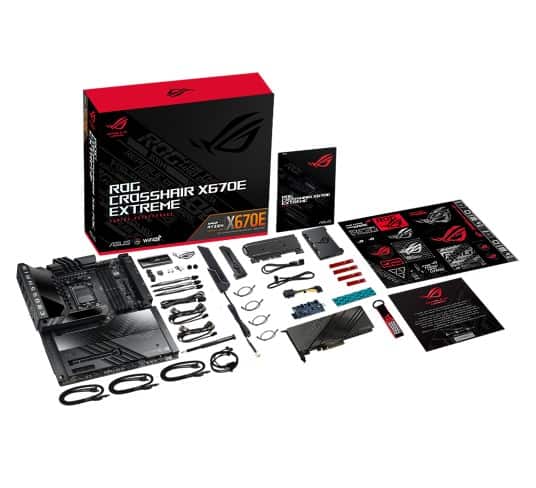
All the bells and whistle you would expect coming from a flag ship gaming motherboard such as the ROG CROSSHAIR X670E EXTREME.
But special note to the brand new PCIe® 5.0, ROG Gen Z.2 card, Gen 5 M.2 slots, USB 3.2 Gen 2×2 front-panel connector, USB4® ports which, for one reduces the DIMM.2 footprint it replaces, but most importantly can fully take advantage of the Ryzen 7000 PCIe 5.0 lanes (up to x4 lanes), and can feed multiple PCIe 5.0 enabled M.2 SSDs which is a big update!
Launching date: 27th of September 2022
MSRP: TBD
ROG CROSSHAIR X670E HERO

The ROG CROSSHAIR X670E HERO is a mastodont of a gaming board in the premium area. The HERO usually brings to their full potential the new chipset add-ons, keep the ROG upper premium appeal, and yet manages to remain well below its much more expensive EXTREME sibling.
We got 18 + 2 teamed power stages rated for 110 Amps, MicroFine alloy chokes, premium metallic capacitors, and ProCool II power connectors.
That’s 2,200 AMPS in total, 1,980 of which are CPU centric. Not far off from the much more expensive ROG CROSSHAIR X670E EXTREME motherboard, so again more than enough to run and severely overclock any CPUs available in the RYZEN 7000 line up. Similarly, It also hints at a very cool VRM since most of the loads will be spread on 18 (CPU) power stages.
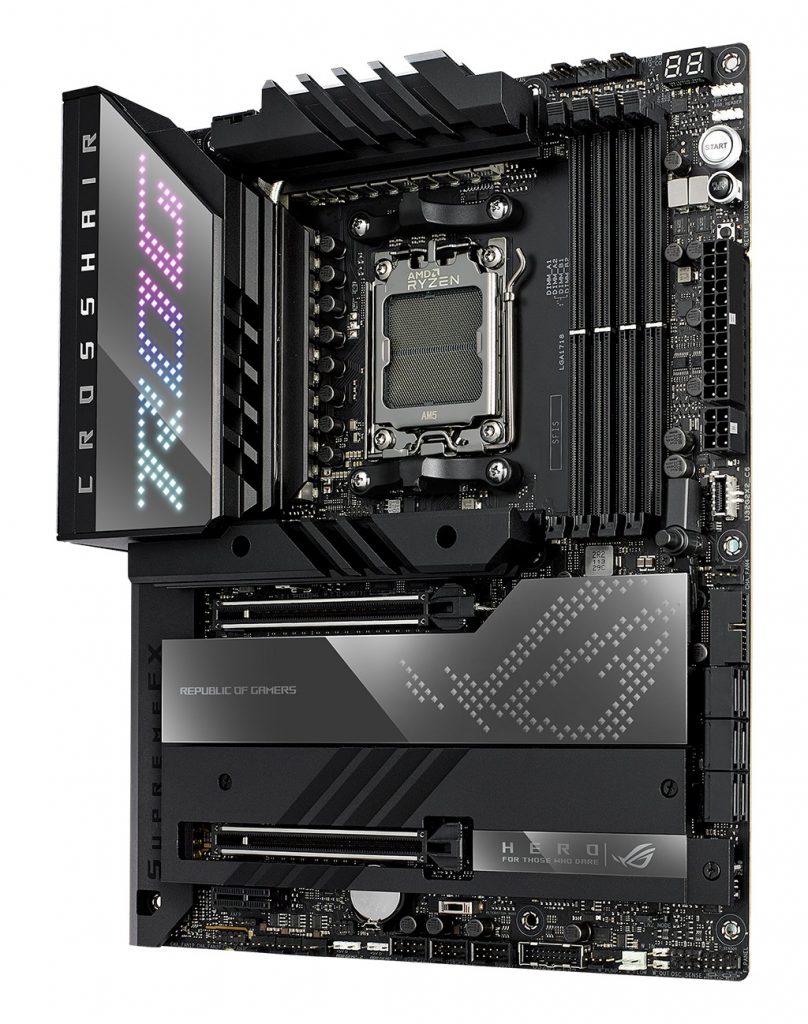
It is an ATX motherboard, also showing off a impressive premium build and shows-off different tone of brush-finish whish does hint at a more precise manufacturing process coming from ASUS plants.
We do have a solid troubleshooting suit, including programmable FLEX soldered buttons, and a Q-error screen.
The RGB Presence has been toned down to a dynamic RGB screen covering the VRM main block.
Let’s finally note the dual GPU ability of the HERO, which will provide 2 x 8 PCIe 5.0 Lanes configuration for two video cards.

ASUS tried to get as much bandwidth out of the motherboard as possible through the back IO.
- x8 10 Gbps 3.2 USB plugs
- x1 20 Gbps USB Type-C
- x2 20 Gbps USB Type-C
- x2 40 Gbps USB Type-C (Thunderbolt 4.0)
- a dual band WiFi 6E adapter with upto 2.4 Gbps of data swap, able to transmit on the much fast 6 GHz radio spectrum
- x1 2.5 Gbps Lan network
For a grand total of an unprecedented 295 Gbps of cumulated data output. Obviously a leap forward when compared to the previous X570 iteration of the board and to put to the credit of the new X670(E) chipset.

Again, all the bells and whistle you would expect coming from a premium gaming motherboard such as the ROG CROSSHAIR X670E HERO.
Let’s note the presence of a PCIe M.2 SSD adapter abled to support up to 2 PCIe 5.0 enabled M.2 SSD sticks which can fully take advantage of the Ryzen 7000 PCIe 5.0 lanes (up to x4 lanes).
Launching date: 27th of September 2022
MSRP: TBD
ROG X670E STRIX-E GAMING WIFI
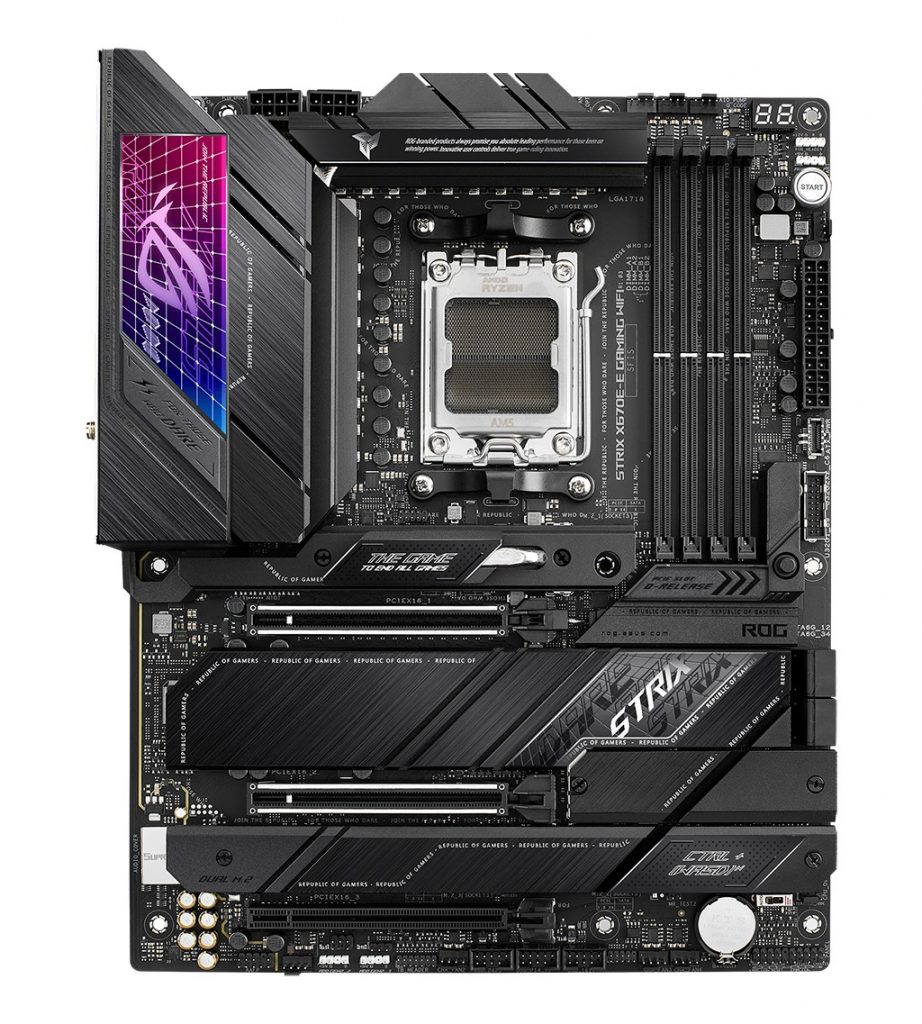
The ROG STRIX X670E is ROG’s best selling gaming motherboard. It tries its best to balance feature, power and pricing.
We got 18 + 2 teamed power stages rated for 110 Amps, MicroFine alloy chokes, premium metallic capacitors, and ProCool II power connectors. The very same VRM available on the significantly more expensive Hero variant.
That’s 2,200 AMPS in total, 1,980 of which are CPU centric. Not far off from the much more expensive ROG CROSSHAIR X670E EXTREME motherboard, so again more than enough to run and severely overclock any CPUs available in the RYZEN 7000 line up. Similarly, It also hints at a very cool VRM since most of the loads will be spread on 18 (CPU) power stages.
The STRIX VRM block are slightly lighter and smaller than seen on the HERO, therefore we should expect a slightly higher temp foot-print.
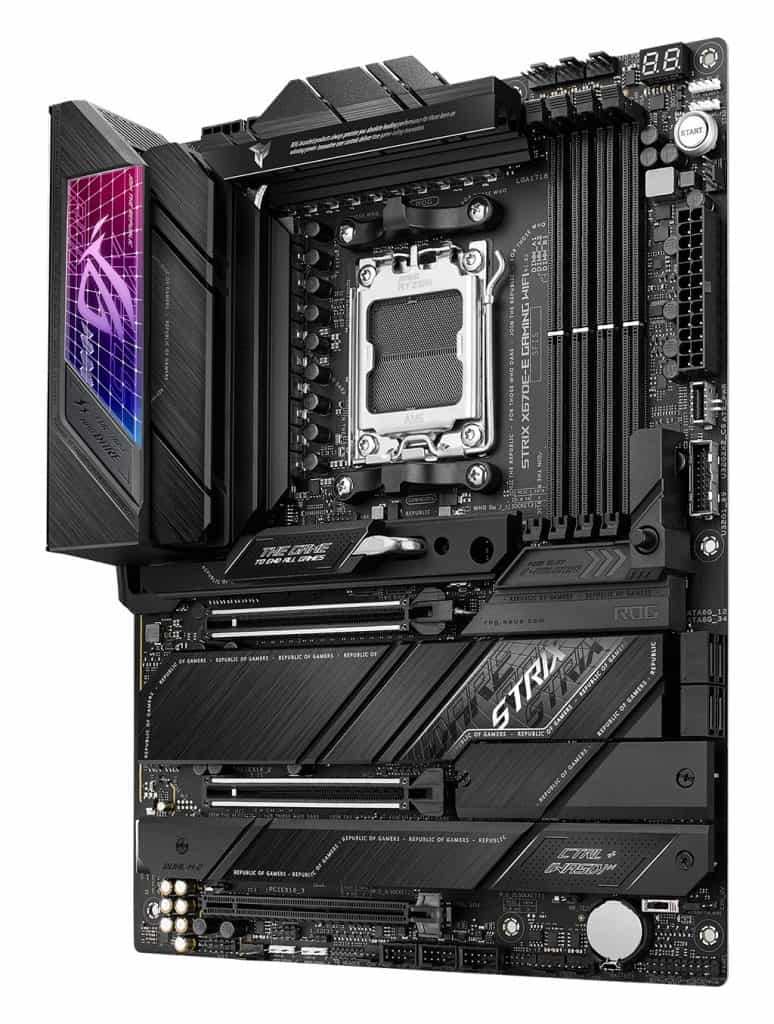
The ROG STRIX X760E-GAMING WIFI looks very similar to its intel Z690 counterpart in terms of design. It does feature the Q-slot PCIe release mechanism we saw on the ASUS Z690 line-up (and on the Z590 TUF variant).
The STRIX retains the HERO dual GPU abilities, which will share upto 8 PCIe 5.0 lanes between two video-cards.
A special focus on troubleshooting solutions, going from the basic EZ debugger, extending to testing solder points, passing by our Q-LED screen for a more refined troubleshooting experience.
We have a solid RGB presence. In the PCB layering, as well as behind the IO roofing and the Chipset heat-shield.
We also have a noticeably upgraded storage solution taking full advantage of the new PCIe 5.0 standard:
3 x PCIe 5.0 M.2 (upto 128 Gbps / M.2 stick)
1 x PCIe 4.0 M.2 (upto 64 Gbps / M.2 stick)
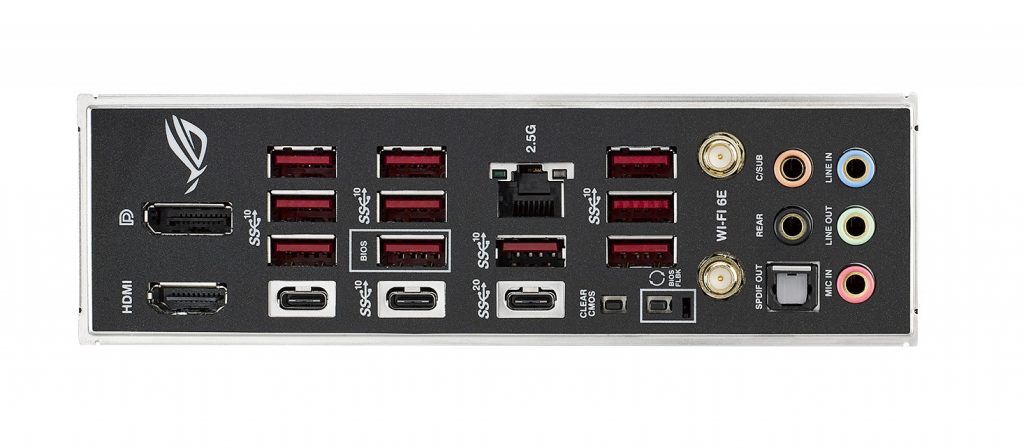
In terms of bandwidth output we have:
- x10 10 Gbps 3.2 USB plugs
- x3 10 Gbps USB Type-C
- a dual band WiFi 6E adapter with upto 2.4 Gbps of data swap, able to transmit on the much fast 6 GHz radio spectrum
- x1 2.5 Gbps Lan network
For a grand total of 155 Gbps of cumulated data output. I sizeable increase when compared to its X570 predecessor but manages to only output half the bandwidth of its more expensive HERO variant.
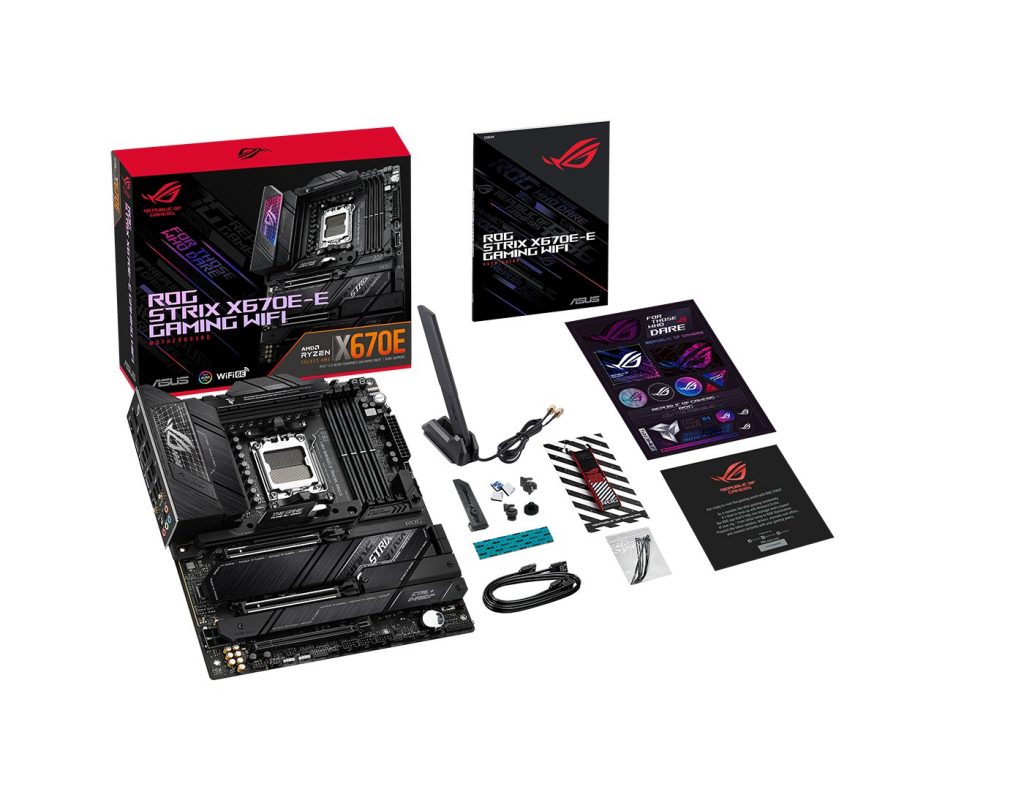
The ROG X670E STRIX-E GAMING WIFI comes with all the usual ROG stickers and branded key holder. As far as the accessories go, the STRIX comes with a minimal set of items including SATA and RGB, and antenna .
Launching date: 27th of September 2022
MSRP: TBD
PRIME X670-P WIFI
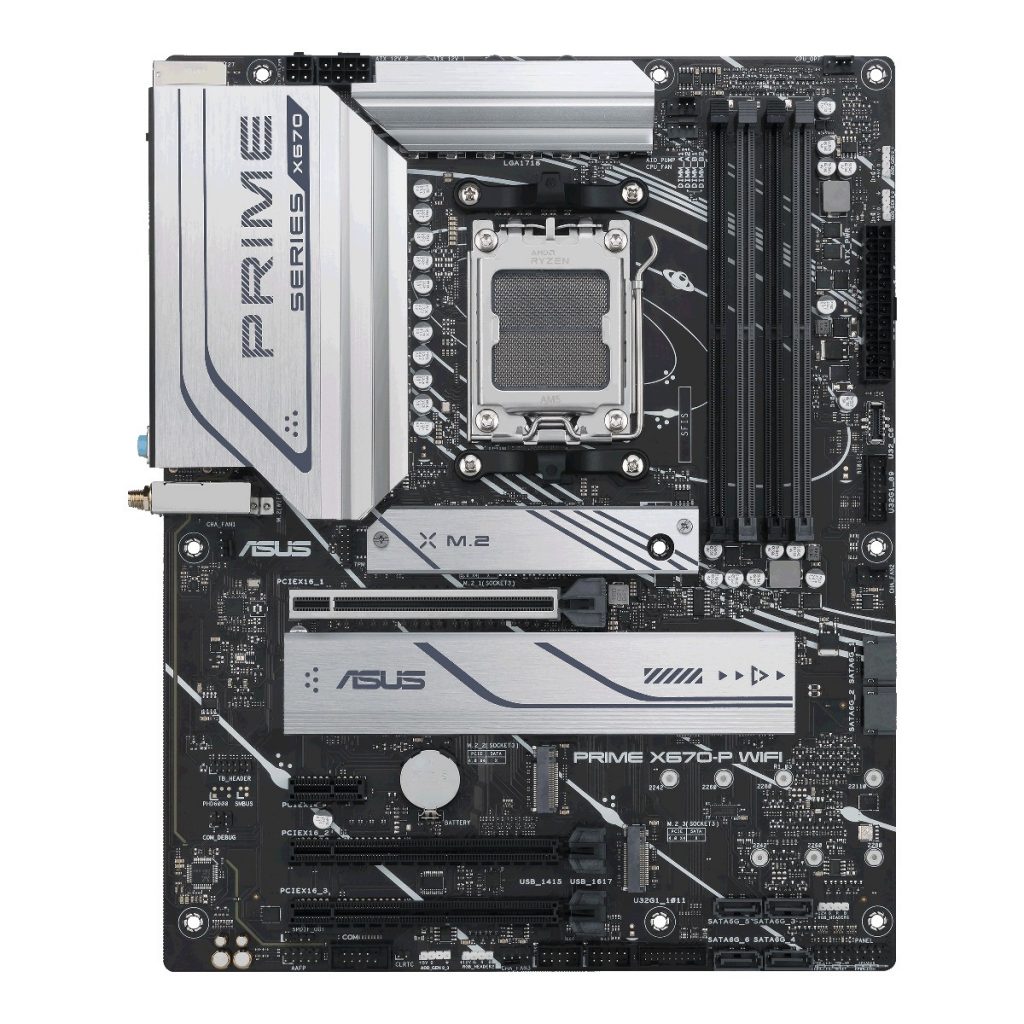
The PRIME X670-P boards are Prime series entry level. It delivers a descent amount of features with some VRM strength. It aims to please both budget gamers and production-focused buyers.
VRM wise we got 14+1 DrMOS, 8+4 pin ProCool connector, alloy chokes and durable capacitors for stable power delivery.
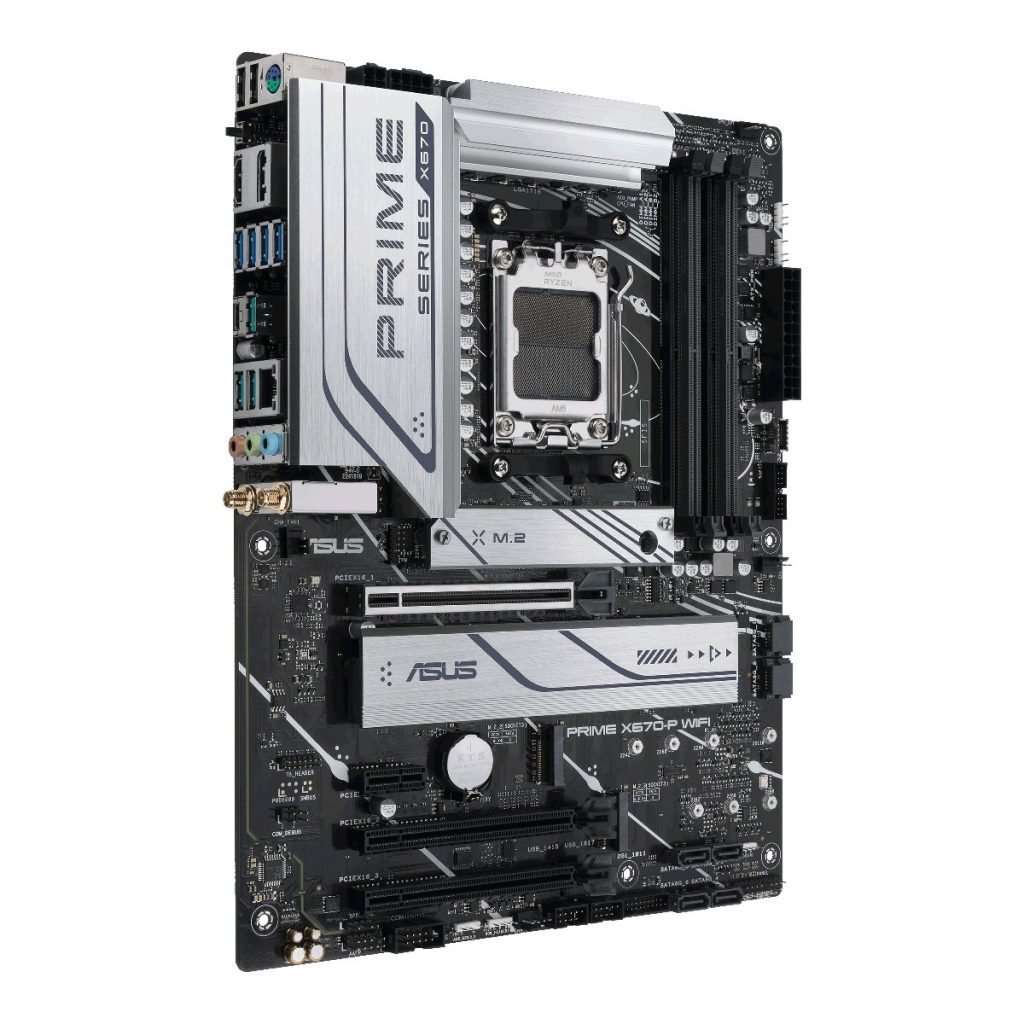
The PRIME X670-P again looks very similar to its intel Z690 counterpart.
Despite being a rather lightly featured motherboard, the PRIME does benefit from the PCIe 5.0 standard introduction, including:
3 x PCIe 5.0 M.2 (upto 128 Gbps / M.2 stick)
1 x PCIe 4.0 M.2 (upto 64 Gbps / M.2 stick)

As usual seen on PRIME series, the back IO comes only with the basics:
- x2 480 Mbps 2.0 USB plugs
- x4 5 Gbps USB 3.0 plugs
- x1 10 Gbps USB Type-C
- x3 10 Gbps USB 3.2 plugs
- a dual band WiFi 6E adapter with upto 2.4 Gbps of data swap, able to transmit on the much fast 6 GHz radio spectrum
- x1 2.5 Gbps Lan network
For a total of 62 Gbps of cumulated data output. Nothing ground breaking, but in par with its market segment and pricing.
Launching date: 27th of September 2022
MSRP: TBD

